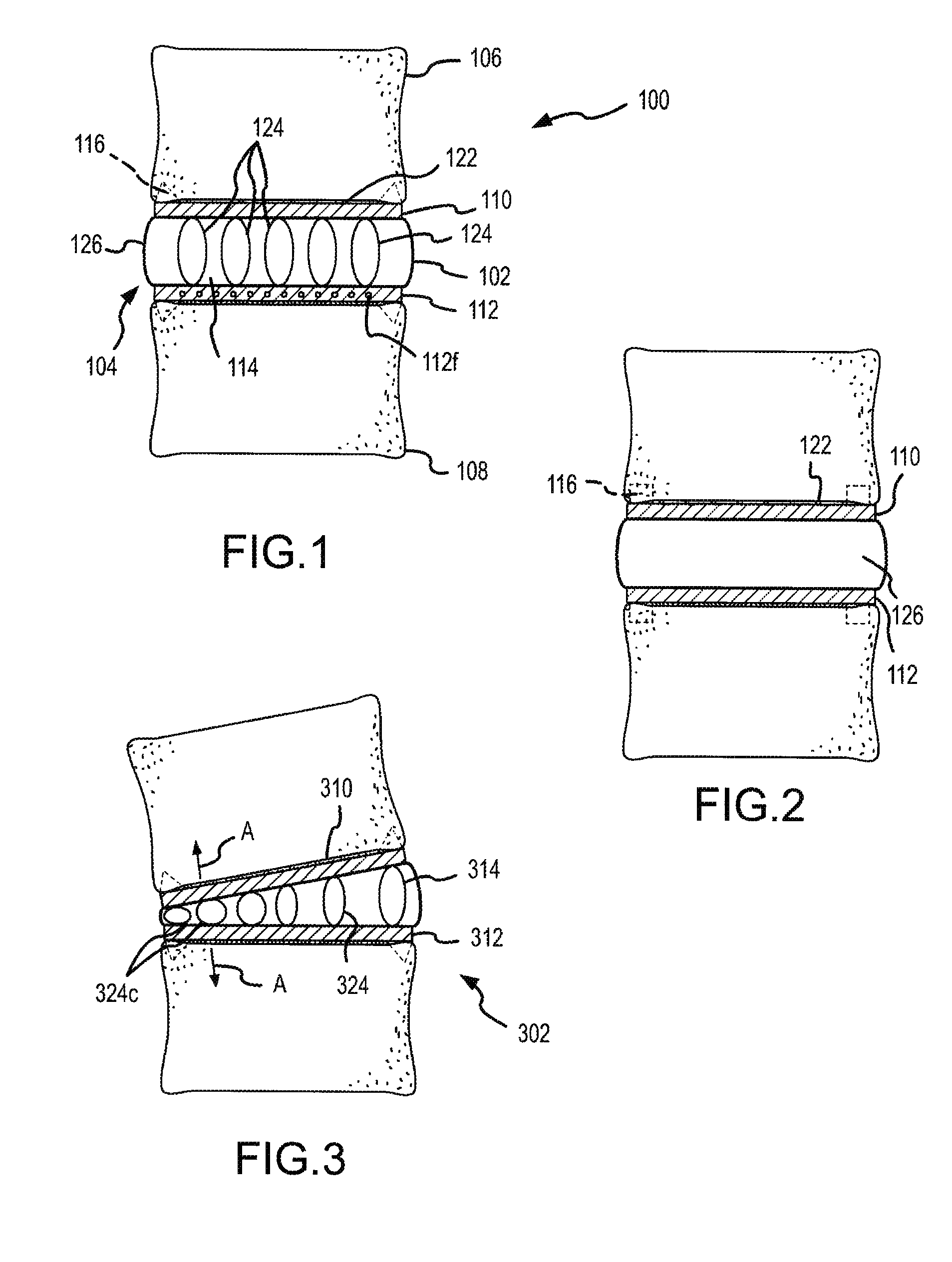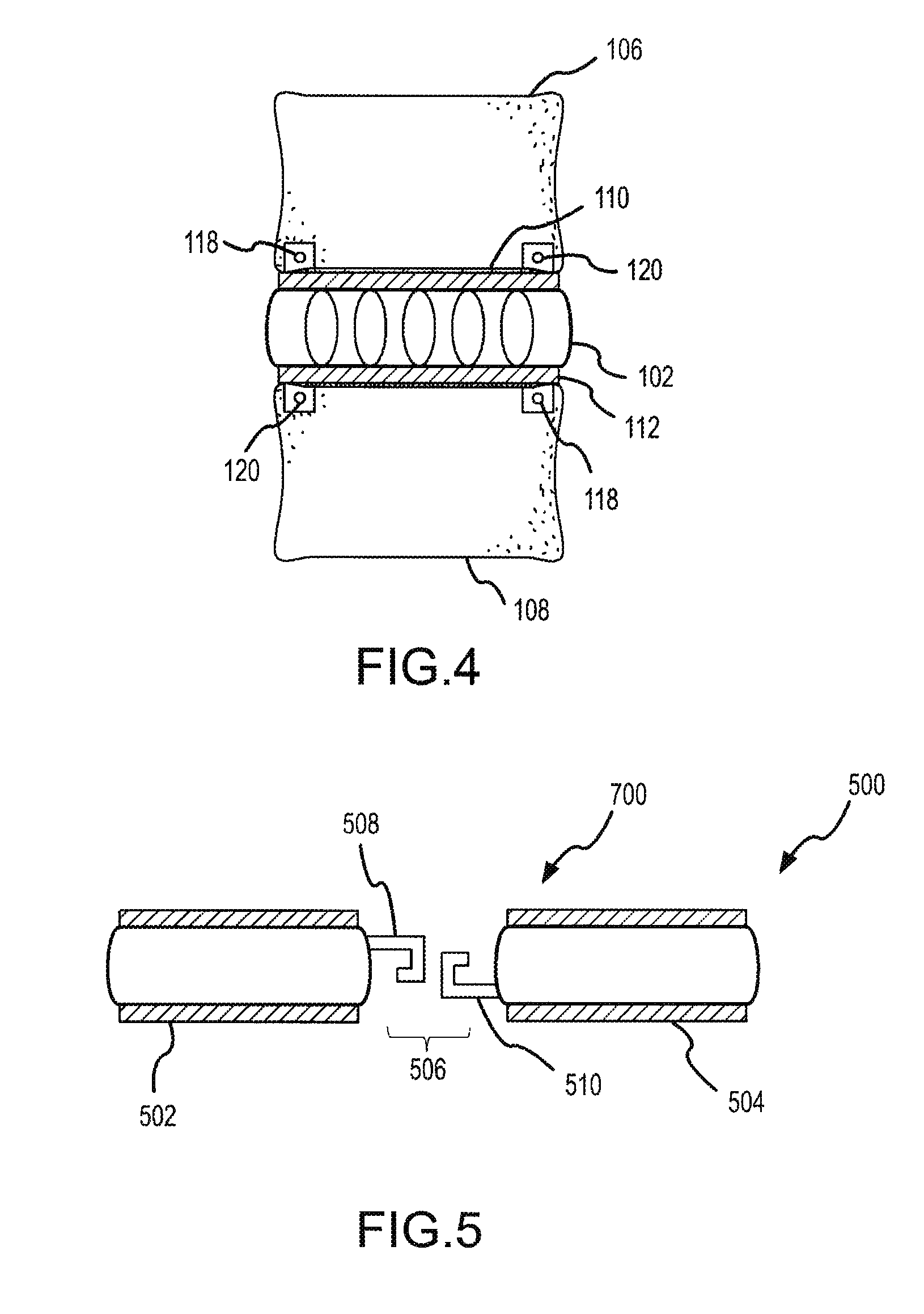Corrective artificial disc
a technology of artificial discs and discs, applied in the field of artificial discs, can solve the problems of reducing the motion and flexibility of the spine, accelerating the degeneration of the disc, and fusing adjacent vertebrae into a single bone mass,
- Summary
- Abstract
- Description
- Claims
- Application Information
AI Technical Summary
Benefits of technology
Problems solved by technology
Method used
Image
Examples
Embodiment Construction
[0025] Some embodiments of the present invention are described with reference to FIGS. 1 to 11. FIGS. 1-11 generally show the present invention on an eye level, off the shelf view with fixation spikes in phantom. One of skill in the art, on reading the below disclosure, will recognize that the exact configuration of the present invention will depend, in part, on the anatomy of the patient.
[0026] In particular, FIG. 1 shows a cross section of an anterior view of a portion of a spinal column 100 with an artificial disc 102. FIG. 2 shows a lateral, elevation view of spinal column 100 with artificial disc 102. Disc 102 is implanted in an intervertebral space 104 situated between a superior vertebral body 106 and an inferior vertebral body 108. Disc 102 includes a superior endplate 110, an inferior endplate 112, and a core 114. Superior endplate 110 and inferior endplate 112 may be formed of a biocompatible metal including shaped memory alloys, other metallic alloys, PEEK, resorbable, p...
PUM
 Login to View More
Login to View More Abstract
Description
Claims
Application Information
 Login to View More
Login to View More - R&D
- Intellectual Property
- Life Sciences
- Materials
- Tech Scout
- Unparalleled Data Quality
- Higher Quality Content
- 60% Fewer Hallucinations
Browse by: Latest US Patents, China's latest patents, Technical Efficacy Thesaurus, Application Domain, Technology Topic, Popular Technical Reports.
© 2025 PatSnap. All rights reserved.Legal|Privacy policy|Modern Slavery Act Transparency Statement|Sitemap|About US| Contact US: help@patsnap.com



